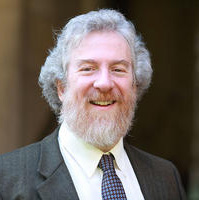Elijah—Families and the End of Days

Elijah is an enigmatic and beloved figure in the Passover seder, with a myriad of explanations for his appearance and role. It’s worth noting that Elijah appears first in our liturgical texts even before we sit down to begin the seder: the haftarah for Shabbat Hagadol (the Shabbat before Pesah) is from the end of Malachi, and concludes with the haunting words, “Behold, I will send you Elijah the Prophet before the coming of the great and awesome Day of Adonai; and he will return the hearts of parents to their children, and the hearts of children to their parents.” I always see this text as displaying the greatest insight into human nature. While it is conceivable to me that one day there will be no more war or terror, that no one will be hungry, and that all will indeed “sit beneath their vine and fig-tree, and no one will make them afraid” (Mic. 4:4), the challenges and trials of all young people who grow within and then beyond their families and communities—the hurts that are caused and carried, the love that is expressed and hidden, shared and hoarded—are inevitable, a part of the human condition. Each year at the seder, many families gather together, often not without strife and quarrel; these tensions are frequently resolved (at least partially) through ancient texts, familiar songs, and four glasses of wine. This text from Malachi warns us every year that even within our own families and communities there are challenges to be faced, freedom to be sought and won, and liberation to be celebrated.
Then Elijah appears at the end of the seder, with a fifth cup poured but not drunk. The halakhic analysts remind us that there is unresolved debate in the talmudic tradition concerning a fifth cup at the seder. Situations of teyku (unresolved questions) are traditionally left for final resolution by Elijah—hence “Elijah’s Cup”—and await determination by the Prophet in the role of ultimate talmudist. But there is more than that.
Elijah never died, but was carried to heaven in the fiery chariot. He abides in that liminal space between life and death, between this world and the next, and so it is Elijah who appears among us toward the end of the seder to begin here and now the work of reconciliation between the generations of our families. The songs at the end of the seder all look beyond the challenges of the moment, to eschatological time, to the End of Days. The building of the Temple (“yivneh beito”in the song Adir Hu) is a symbol of the messianic era, and so the old songs remain in almost every version of the Haggadah—even those that otherwise remove Temple references.
A haunting text, Karev Yom (May the Day Draw Near That Is Neither Day nor Night), was popular in the earliest days of the Yishuv (Zionist settlement of what was then Palestine).
Listen to a Hasidic setting.
Here is the text from Malachi, appropriately sung by a father and daughter.
As always, I am interested in hearing comments and reflections on these thoughts about prayer and liturgy. You may reach me at sabarth@jtsa.edu.



